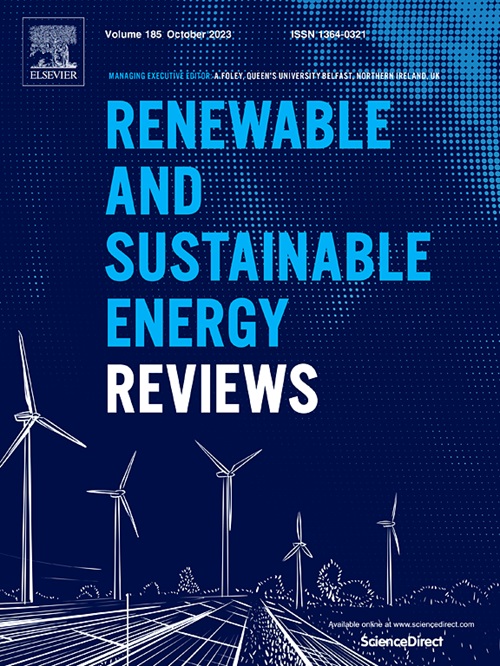Protection and fault ride-through techniques of VSC-HVDC systems for offshore wind power transmission—Research status, challenges, and prospects
IF 16.3
1区 工程技术
Q1 ENERGY & FUELS
引用次数: 0
Abstract
The safe and reliable operation of offshore voltage-source-converter-based high-voltage direct current (VSC-HVDC) transmission systems poses a significant challenge to the vigorous development of offshore wind power. This research reviews and analyses the latest advances in protection and fault ride-through techniques for offshore VSC-HVDC wind power transmission systems, primarily including fault characteristic analysis, DC protection principles, fault current limitation, and energy dissipation techniques. The research begins by summarizing typical offshore wind power transmission types and their characteristics. Subsequently, the transient response characteristics of DC faults, fault-current calculation methods, and additional challenges in offshore VSC-HVDC systems, are analysed. Based on this, the current research status of non-unit and pilot protections for DC line are reviewed, and the brand-new protection challenges caused by distant offshore special locations are outlined. Thereafter, the fault ride-through techniques, primarily including DC fault current limitation and DC energy dissipation, are discussed. The technical difficulties regarding fault ride-through in offshore VSC-HVDC systems are presented. In addition, corresponding research approaches are discussed.
求助全文
约1分钟内获得全文
求助全文
来源期刊

Renewable and Sustainable Energy Reviews
工程技术-能源与燃料
CiteScore
31.20
自引率
5.70%
发文量
1055
审稿时长
62 days
期刊介绍:
The mission of Renewable and Sustainable Energy Reviews is to disseminate the most compelling and pertinent critical insights in renewable and sustainable energy, fostering collaboration among the research community, private sector, and policy and decision makers. The journal aims to exchange challenges, solutions, innovative concepts, and technologies, contributing to sustainable development, the transition to a low-carbon future, and the attainment of emissions targets outlined by the United Nations Framework Convention on Climate Change.
Renewable and Sustainable Energy Reviews publishes a diverse range of content, including review papers, original research, case studies, and analyses of new technologies, all featuring a substantial review component such as critique, comparison, or analysis. Introducing a distinctive paper type, Expert Insights, the journal presents commissioned mini-reviews authored by field leaders, addressing topics of significant interest. Case studies undergo consideration only if they showcase the work's applicability to other regions or contribute valuable insights to the broader field of renewable and sustainable energy. Notably, a bibliographic or literature review lacking critical analysis is deemed unsuitable for publication.
 求助内容:
求助内容: 应助结果提醒方式:
应助结果提醒方式:


